Unit – 6
Electrical Installations
Electrical protection equipment
Prerequisite:
1) Electromagnetism
2) Shock and its effects
3) Effect of temperature on a current carrying conductor or
4) Thermocouple
Learning outcomes at the end of this experiment student will be able to
1) Elaborate need of protect ion equipment in electrical systems
2) Explain the structure and operation of fuse, MCB, MCCB and ELVB.
3) Choose a protective device for its different electrical system with justification
Theory
Electrical power system operates at various voltage level from a 230 volt single phase, 415 volt to 765 kilovolt three phase or even more. Electrical apparatus used may be enclosed (e.g. motors) or please in open (e.g. transmission lines). all such equipment undergoes abnormalities in their lifetime due to various reasons. It is necessary to avoid these abnormal operating regions for the safety of the equipment.
Even more important is the safety of the human person which may be endangered due to exposure to live parts under fault or abnormal operating conditions. A small current of the order of 50 mA is sufficient to be fatal. Whenever human security is sacrificed for there exist the possibility of equipment damage, it is necessary to isolate and de energized the equipment. designing electrical equipment from a safety perspective is also a crucial design issue which will not protect it and provide human safety under abnormal operating conditions. This job is assigned to electrical protection systems. It encompasses apparatus protection and system protection. This is generally carried out by using Switchgear is a generic term which includes all the switching devices associated with power system protection. It also includes or devices associated with control, metering and regulating of electrical power systems. Assembly of such devices in a logical manner forms switchgear. In other words system used for switching, controlling and protecting the electrical power circuits and different types of electrical equipment and known as which gear. The switchgear has to perform the function of carrying, making and breaking the normal load current like a switch and it has to perform the function of clearing the fort in in the power system. In addition to that, it also has the provision of metering and regulating the various parameters of electrical power systems. Thus the transformers, protection relays, measuring instruments, electrical switches, electrical fuses, miniature circuit breaker, lightning arresters or surge arresters, electrical isolators and other associated pieces of equipment.
Following are the major protective equipment used in household electrical appliances:
1) Fuse
2) Miniature circuit breaker (MCB)
3) Earth Leakage Circuit Breaker (ELCB)
4) Moulded Case Circuit Breaker (MCCB)
Fuse
A) Types of fuses and applications
In the field of electronics or electrical, a fuse is an essential device used in various electrical circuits which gives the protection from the overcurrent. It it comprises a strip or a metal wire that dissolves when the heavy flow of current comprises a strip or a metal wire that dissolves when the heavy flow of current supplies through it. Once this device has function in an open circuit, it ought to ji wire or changed based on the type of fuse. A fuse is an automatic disconnection of supply which is frequently shortened to ADS. The alternative of the fuse is a stabilizer or circuit breaker, but they have many different characteristics.
B) Why do we require Fuse?
These are used to prevent the home appliances from the high current or overload damage. If we use a fuse in the homes, the electrical faults cannot happen in the wiring and it doesn't damage the appliances from the fire of wire burning. When the fuse gets break or damage, then an abrupt sparkle happens which made direct to damage your home appliances. That is the reason we required different types of fuses to guard our home appliances against damage.
C) Working principle of Fuse

The working principle of the fuse is “ heating consequence of the current”. It is fabricated with a lean strip for thread of metallic wire. The connection of the fuse in an electrical circuit is always in series. When the too much current is produced due to the heavy flow of current in the electrical circuit the fuse get soft and it opens the circuit. The extreme flow of current main direct to the collapse of the wires and prevents the supply. Diffuse can be changed by the new fuse with an appropriate rating. It can be designed with elements like copper, zinc, aluminium and silver. They also perform like a circuit breaker for breaking the circuit while the abrupt fault happens in the circuit. This works like a safety measure for protector for humans from risk. Like this, the fuse works
Fuse rating = 
The selection of a fuse can be done by calculating the fuse rating by using the above formula
Different types of Fuses:
The fuses are classified into to several types based on the application namely AC type fuse and DC type fuse. Again these fuses are classified into several types. The following diagram illustrates the electrical fuse types chart based on the AC fuse and DC fuse.
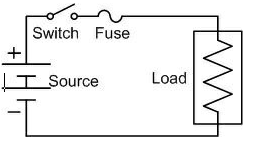
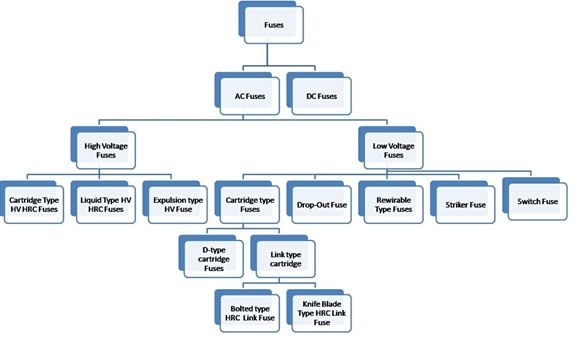
DC fuse:
DC fuses are available superior in size and DC supply has a stable value over 0 volts. So it is tough to remove and deactivate the circuit. There will be a chance of generation of electrical Arc between dissolved wires. To conquer this electrodes located at battery distances. For this reason the size of the DC fuse gets amplified.
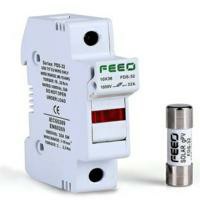
AC fuses:
The AC fuse is lighter in size and oscillated 50 to 60 times in each and every second from least to highest. As a result, there is no scope for Arc generation between the dissolved wires. For this reason, they can be crammed into a small size. Further, AC fuses are classified into two parts namely HV fuses and LV fuses. Here LV and HV indicates the low voltage and high voltage LV fuses. The low voltage fuses are divided into five types such as rewirable, cartridge, dropout, striker and switch fuses.
Rewirable fuses:
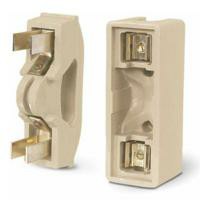
Rewirable fuses are LV fuses, which are almost used in small applications like wiring in in the house, small scale industries, and other tiny current applications. these types of fuses include two essential parts such as a fuse base which has two terminals like in and out. In general, this element is fabricated with porcelain. Another part of this fuse is a fuse carrier, which grip the fuse element. This element is fabricated with aluminium, tinned copper and lead. The main advantage of a fuse carrier is, we can simply plug and remove from the base of the fuse without the risk of shock. As the fuse is damaged due to heavy current, then we can simply eliminate the fuse carrier as well as put back the fuse wire.
Cartridge type fuses:
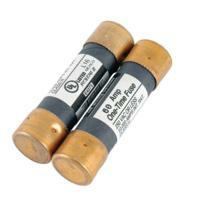
The cartridge type of fuses has entirely closed containers and the metal contact as well. The applications of this fuses mainly include low voltage (LV), high voltage (HV) and small fuses. again this types of fuses are classified into two types, they are D type and link type fuses.
D type Cartridge Fuse

This type of fuse is composed with the cartridge, base of the fuse, adapt or ring, and cap. The base of the fuse includes a fuse cap, which is packed with the fuse ingredient by cartridge using an adapter ring. It is composed of the cartridge, fuse base, cap and adaptor ring. The fuse base has the fuse cap, which is fitted with the fuse element with a cartridge through the adaptor ring. The connection of the circuit is finished when the tilt of the cartridge builts contact through the conductor.
High Rupturing capacity or Link Type Fuse:
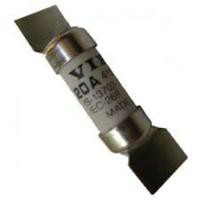
The link type fuse is also known as high rupturing capacity (HRC) or BS type fuse. In this sort of fuse, the current flow with fuse element is specified under standard condition in this BS type fuse, the flow of current by fuse element is given under normal condition. The arc which is generated by the fuse blown is controlled is fabricated with porcelain, ceramic and silver. the container of the fuse element is packed with silica sand. This type of use is again characterized into two parts includes a blade type and bolted type.
Blade and bolted type fuses

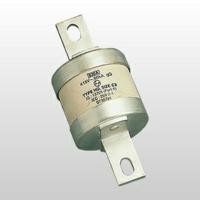
The knife type fuse for plugin type of fuses are designed with plastic. this type of use can be simply changeable in the electric current exclusive of any load in bolted type fuse, plates of this fuse are conducting are set to the base of the fuse.
Striker type fuse
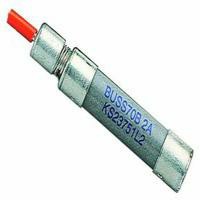
Describe the type of fuse is employed for tripping and closing the electrical circuit. This fuses are having plenty of force as well as displacement.
Switch type fuse
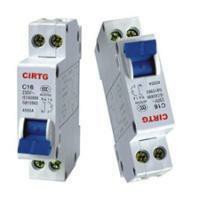
Basically the switch type fuse is enclosed with a metal switch and also a fuse. These fuses are mainly used in low and intermediate voltage levels.
HV (High voltage) Fuses
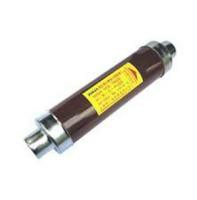
Generally, HV fuses are used to protect the transformers like instrument transformers, small Power transformer and also used in power systems. These fuses are normally charged for voltages over 1500 volt to 138000 volte.
The fuse part in HV fuses are fabricated with either copper, silver or in some cases tin is used, in order to offer consistent and steady performance. These fuses are classified into three types which include the following.
Cartridge type HRC fuse
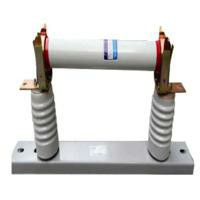
The fuse component of the HRC is cut in The helix form which evades the effect of the corona at the upper voltages. It includes to fuse elements namely low resistance and high resistance, and that are located parallel by each other. The low resistance wires take the usual current which is is blown out as well as decreases the short circuit current throughout the fault state.
Liquid type HRC fuse
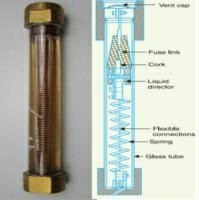
This type of fuse is packed with carbon tetrachloride also preserved at both the tops of the caps. Once the error occurs when the following current surpasses away from the allowable limit and the element of the fuse is blown out. the flute of the fuse performs as an Arc extinguishing standard for the HRC fuse types. they may be used to protect the transformer as well as the support protection to the breaker circuit.
Expulsion type HV fuse
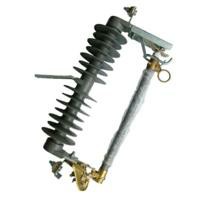
These types of fuses are extensively used to protect the feeders as well as transformer due to they're low priced. It is designed for 11kV, also their cracking capability is up to 250 MVA. This type of use includes and unfilled open finished cylinder designed with synthetic resin bonded paper. The elements of the fuse are positioned in the cylinder, and the tops of the tubes are linked to appropriate equipment at every finish. The ark generating is blown off in the inside covering of the cylinder, and gases thus shaved destroys the arc.
A)Applications of Fuse
The different types of fuses and their uses have discussed are essential components in all the electrical circuits. some of the main applications of uses in the electrical and electronics field include the following.
Power Transformers, electrical appliances, like ACs (Air Conditioners), TV, washing machines, music systems and many more, electrical cabling in home, mobile phones, motor starters, laptops, power chargers, cameras, scanners, printers, add photo copiers, automobiles, electronic devices and gaming's.
B)Advantages of an Electrical Fuse
1) It is the cheapest form of protection and it doesn't need any maintenance.
2) Its operation is completely automatic and requires less time as compared to circuit breakers.
3) The smaller sizes of fuse element impose a current limiting effect under short circuit conditions.
4) Its inverse time current characteristic enables its use for overload protection.
D)Disadvantages of an Electrical Fuse
1) Considerable time is required in replacing a fuse after the operation.
2) The current time characteristic of fuse cannot always be correlated with that of the protective device.
Miniature Circuit Breaker:
Miniature Circuit breakers (MCB) are electromechanical devices which are used to protect electrical equipment from an over current. MCB is a a mechanical switching device which is capable of making, caring and breaking currents under normal circuit conditions and also making, caring for a specified time and automatically breaking currents under specified abnormal circuit conditions such as those of short circuit. In short MCB is a device for over load and short circuit protection.
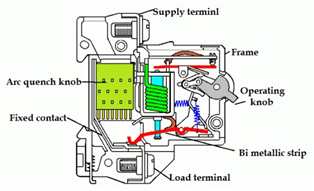
A) Construction :- The construction of miniature circuit breakers is very simple, robust and maintenance free. MCB is replaced by a new one when it is failing because MCB is not repaired or maintained. There are three types of miniature circuit breakers in construction,
1) Frame:- Frame is a rigid, strong, insulated housing in which the other components are mounted. It is a molded case.
2) Trip unit : For the proper working of the miniature circuit breaker trip unit is responsible. Two main types of trip mechanism are provided in Miniature circuit breaker (MCB). a bimetallic strip provides protection against overload current and an electromagnet provides protection against short circuit current. Trip unit is the main part of the MCB.
3) Operating Mechanism :- The operating mechanism of MCB provides with the manual operation for closing and opening operation of the miniature circuit breaker. It has three positions “ON”, “OFF”, “TRIPPED”. By observing the position of the switching latch one can determine the condition of MCB whether it is closed, tripped or manually switched off. If the MCB is tripped due to overcurrent or overheating. The external switching latch in the “TRIPPED” position. When manually switch off the miniature circuit breaker, the switching latch will be in “OFF” position. The switch is positioned at “ON”, in a closed condition of the miniature circuit breaker.
B)Working:- The principle of operation is simple. Functions of miniature circuit breaker is interrupting the continuity of electrical flow through the circuit once a fault is detected. In simple terms of MCB is a switch, which automatically turns off when the overcurrent flowing through it. Generally, MCB is designed to to protect against overcurrent and over temperature false. There are two contacts one is fixed and the other movable. When the current exceeds the predefined limit a solenoid forces the movable contact to open (ie. Disconnect from the fixed contact) and the MCB getting off thereby stopping the current to flow in the circuit point the MCB is manually turned on to restart the flow of current. This mechanism is used to protect from the faults arising due to over current. To protect against fault arising due to overheating for increase in temperature bimetallic strip is used. MCB are generally designed to trip within 2.5 million seconds when an overcurrent fault arises. In case of temperature rise or overheating it may take 2 seconds to 2 minutes for the MCB to trip. If the circuit is overloaded for a long time, the bimetallic strip becomes overheated and deformed. This the formation of bimetallic strip causes, displacement of latch point moving contact of the MCB is show arrange by means of spring pressure, with this large., That is little displacement of large causes, release of spring and makes the moving contact to move for opening the MCB. The current coil for trip coil is placed such a manner that during short circuit fault the MMF of that causes its plunger to hit the same latch. And make the large to be displaced. Hence the MCB will open in the same manner. And it protects the circuit from the overcurrent overloading.
A) Advantages:-
1) With a miniature circuit breaker, it is very simple to resume to the supply. You just need to push the knob of MCB back to on position. But in case of fuse, the entire fuse wire needs to be replaced.
2) A miniature circuit breaker is more sensitive to current then fuse. It detects any abnormality in the current flow and automatically switches off the electrical current.
3) A miniature circuit breaker is reusable and hence has less maintenance and replacement cost point where as a fuse leads to the replaced whenever it goes faulty.
4) In case of a miniature circuit breaker, the faulty zone of an electrical circuit can be easily identified.
B) Types of MCB
There are three standard characteristics are available for domestic as well as commercial MCB are given by B,C and D. Each type has its own function
Type B

MCB are mainly used where switching surges are small or non exist and are generally suitable for domestic applications and light commercial applications. There are no devices with long high starting current in domestic applications and has the best suited MCB is type B. these are designed to trip at fault currents in the range of 3 to 5 times the rated current. Suppose if the rated current is 10 ampere then the MCB trips at 30-50 A.
Type C
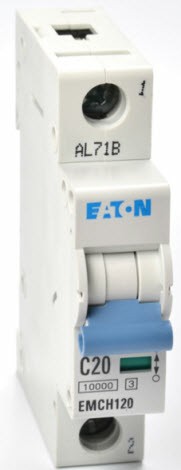
MCB are designed for high inductive circuits where surge currents are expected. These are generally used for commercial and industrial applications where a number of fluorescent lamps been turned ON or starting of small motors may give high search currents.
These are more sensitive than type B MCB and causes reduced nuisance trips. Type C MCB are designed to operate for trip at the fault currents of 5 to 10 times that of rated current. For 10 A type C MCB, the operating current range is 50 – 100 A.
Type D
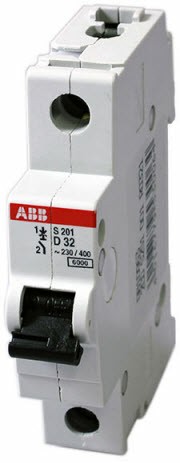
MCBs are designed for heavy industrial applications where normal surge currents are very high. These are ideal for electrical welders and site Transformers where frequent high surge currents are expected.
The most common applications of type D MCBs include motors, UPS systems comma x-ray machines, Transformers and battery charging systems. These are designed to trip at 10 – 20 times The rated current. For 10 A type D MCBs, the operating current range is 100 – 200 A.
The setting or characteristics of an MCP are fixed in the factory itself by the manufacturer and they are not adjustable at the user end or at the site. Tripping currents for operation at 0.1 second or less different MCBs are given below.
Type B | 3-5 times rated current |
Type C | 5-10 times rated current |
Type D | 10-20 times rated current |
Earth Leakage Circuit Breaker (ELCB)
An ECLB is one kind of safety device used for installing an electric device with high Earth impedance to avoid shock. These device is identify small stray voltages of the the electrical device on the metal enclosures and intrude the circuit if a dangerous voltage is identified. The main purpose of Earth leakage circuit breaker is to stop damage to humans and animals due to electric shock. Earth leakage circuit breaker is a device used to directly detect currents leakage to earth from an installation and cut the power and mainly used in TT earthing systems.
There are two types of ELCBs :
1) Voltage Earth leakage Circuit Breaker (voltage ELCB)
2) Current Earth Leakage Circuit System (Current ELCB)
Voltage ELCB have first introduced about 60 years ago and current ELCB was first introduced about 40 years ago. For many years, the voltage operated ELCB and the differential current operated ELCB were both are referred to as ELCB because it was a simpler name to remember. But the use of a common name for two different devices gave rise to.
Considerable confusion in the electrical industry. If the wrong type was used on an installation, the level of protection given could be substantially less than that intended. To ignore this confusion, IEC decided to apply the term residual current devices (RCD) two differential current operated ELCBs. Residual current refers to any current over and above the load current.
A) Working Principle of Voltage ELCB:-
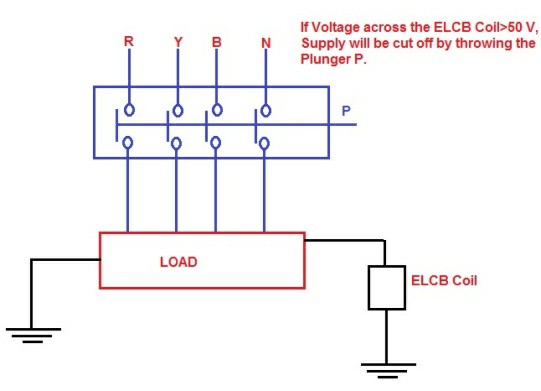
ELCB is a voltage operated device. It has a coil and if the voltage across the coil exceeds as a predetermined value such as 50 V, the current through the coil will be sufficient enough to trip the circuit. Voltage ELCB is connected in between the metallic part of equipment and the Earth. If we take an example of insulation failure then the voltage across the coil of voltage ELCB will drive enough Karan to cut the power supply till the manually reset. The way to identify an ELCB is by looking for green or green and yellow Earth wire entering the device. They relay on voltage returning to the trip via the earth wire during a fault and effort only limited protection to the installation and no personal protection at all. You should use plugin 30 mA RCD's for any appliances and extension leads that may be used outside as a minimum.
Advantages of voltage operated ELCB
Disadvantages of voltage operated ELCB
B)Working Principle of Current (ELCB) :
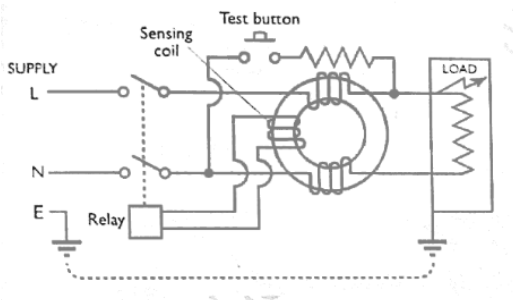
The working of current ELCB is quite interesting but easy. Current operated ELCB is also known as Residual Current devices (RCD). Residual current device (RCD) has a toroidal iron core over which phase and neutral windings are wound. A search coil is also mood on the same iron core which in turn is connected to the trip coil. Figure below shows the constructional detail of RCD or current ELCB.
Under normal operating condition, the current through the phase building and neutral building are same but both the windings are wound in such a manner to oppose the mmfs of each other, therefore net mmf in the toroidal iron corewill be zero. Let us consider a condition where Earth leakage current exists in the lord side. In this case the current through the phase and neutral will no longer be equal rather phase current will be more than the neutral current. Does MMF produced by face building will be more than the MMF produced by neutral building because of which a net MMF will exist in the toroidal iron core.
Net MMF in core = MMF by phase winding - MMF by neutral winding
This net MMF in the core will link with the search coil and aa MMF is changing in nature (current is AC),an EMF will be induced across the terminals of search coil. This will intern drive a current through the trip coil which will pull (because of current flow through the trip coil ok, it will behave as an electromagnet and hence will pull the lever to open contact) the supply contacts to isolate the power supply. Notice that current ELCB works on residual current that is the reason it is also called residual current device. A RCD/ Current ELCB is also provided with test button to check the healthiness of the safety device. If you carefully observe the figure, you will notice that, when we press the test button, load and face building are bypassed due to which only MMF because of neutral winding will exist in the core (as there is no opposing MMF as was the case with both the windings in service) which will cause RCD to trip to isolate supply.
Moulded Case Circuit Breaker:

Molded Case Circuit Breaker are electromechanical devices which protect a circuit from overcurrent and short circuit. They provide overcurrent and short circuit protection for circuits ranging from 63 Amps up to 3000 Amps. Their primary functions are to provide a means to manually open a circuit and automatically open a circuit under overload or short circuit conditions. The overcurrent, in an electrical circuit result from short circuit overload for faulty design.
Unlike fuse, and MCCB can be easily reset after of faulty and offers improved operational safety and convenience without incurring operating cost.
Moulded case circuit breakers generally have a thermal element for overcurrent and magnetic element for short current release which has to operate faster. MCCBs are manufactured such that end user will not have access to internal workings of the overcurrent protection device. Generally constructed of two pieces of heavy duty electrically insulated plastic, these two halves are riveted together to form the whole point inside the plastic shell in a series of thermal elements and a spring loaded trigger point when the thermal element gets too warm from an over current situation, the spring strips, which in turn will shut off the electrical circuit.
A)Sizing the MCCBs : MCCBs in an electrical circuit should be sized according to the circuit's expected operating current and possible fault currents. The three main criteria while selecting MCCBs are:
A) Types of MCCB:
Types of MCCB | Operating current | Operating time | Application | Suitability | Surge current | Installation location |
Type B | Trips between 3 and 5 times rated current (In) | 0.04 – 13 seconds | Domestic applications (lighting and resistive elements) | Resistive load application | Low | Sub feeder of distribution board |
Type C | Trips between 5 and 10 times rated current (In) | 0.04 – 5 seconds | Commercial or industrial applications | Inductive load applications | Moderate | At incoming/outgoing of distribution board |
Type D | Trips between 10 to 20 times rated current (In) | 0.04 – 3 seconds | Commercial or industrial applications | Inductive capacitive load applications (pumps, motor, large winding motors e.t.c.) | High | At incoming of distribution board/panels |
Type K | Trips between 8 to 12 times rated current (In) | 0.04 – 5 seconds | Industrial applications | Inductive and motor loads with high in rush currents | High | At incoming of distribution board/panels |
Type Z | Trips between 2 to 3 times rated current (In) | 0.04 – 5 seconds | Highly sensitive to short circuit and are used for protection of highly sensitive devices such as semiconductor or devices | Medical instruments | Very low | At sub feeder of of distribution board for IT equipment |
Cell: A device which is used as a source of EMF and which works on the principle of conversion of chemical energy into electrical energy is called cell.
Battery: the combination of various cells to obtain desired voltage level is called as a battery.
Electrolyte: which undergoes decomposition due to flow of electrons.
+Ve charge electrodes-> anode
-ve charged electrodes-> cathode
Types of cell
Primary | Secondary |
Electrical energy indirectly obtained from chemical energy. | Electrical energy is already present in the cell in form of chemical energy and then converted to electrical energy. |
Chemical reactions are irreversible (cannot be recharged) | Chemical reactions are reversible. |
Cell is replaced when it goes down. | Cell is recharged back. |
Polarisation is present. | Polarization is absent. |
Low efficiency. | High efficiency. |
Capacity is low. | Capacity is high |
Less cost | High initial cost. |
No maintenance is required. | Frequent charging and other maintenance is required. |
Lead acid battery
Construction
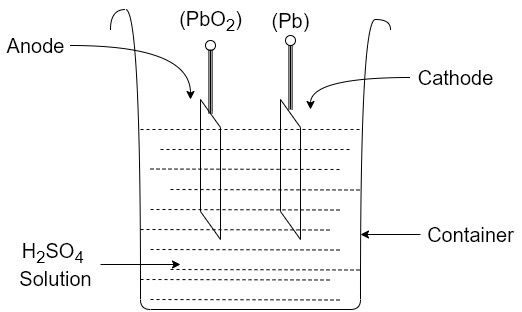
Charging and discharging of lead acid battery


Discharging:-
When external supply is disconnected and a resistance is connected across the anode and cathode then current flows through the resistance drawing and electrical energy from the battery this is discharging.
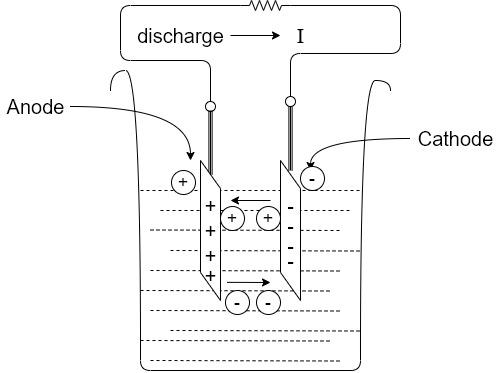
Recharging: - the cell provides the discharge current for limited time and it is necessary to recharge it after regular time interval. Again and EMF is injected through cell terminal with help of external supply.
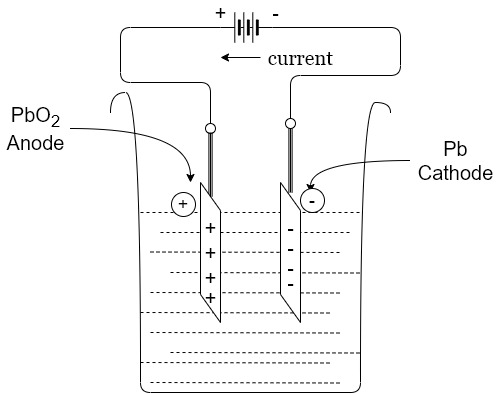
Rating of lead acid battery
Maintenance and precautions to be taken for lead acid battery
Applications
Lithium ion battery
The lithium ion battery works on the principle of movement of lithium ions from electrodes.
Construction
The lithium ion battery is made up of an anode cathode, separator, electrolyte and to current collectors (+ve and -ve)
Anode-> lithium ion uses carbon electrode as its anode with a current collector of thin copper foil.
Cathode -> it uses lithium cobalt oxide commonly used for cathode with the current collector made up of thin aluminium foil.
Separator-> a separator is a fine porous polymer film.
Electrolyte-> it is the solution based on a lithium salt in an organic solvent.
Both electrodes are made up of materials which can “intercalote” or “absorb” the lithium ions.
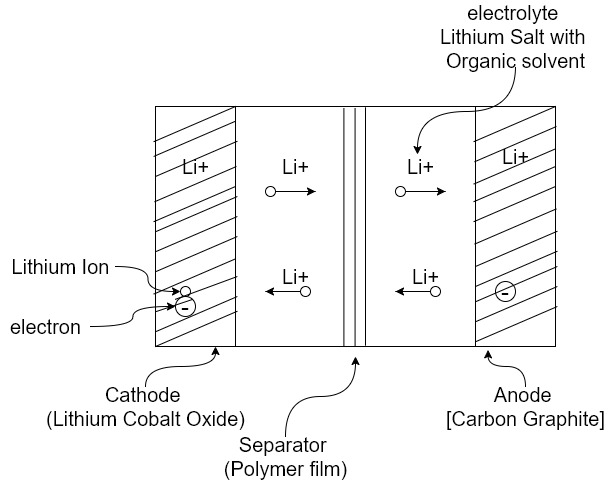
Working
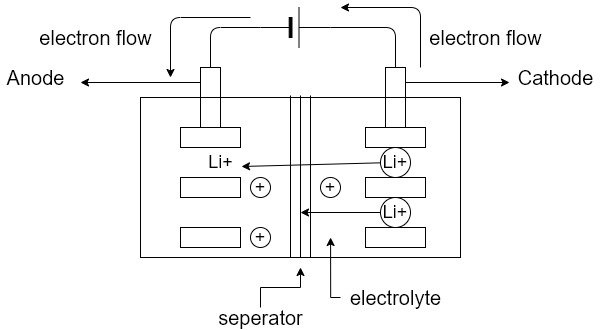
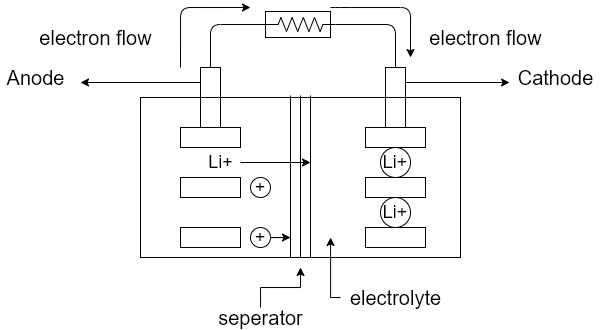
Advantages
Disadvantages
Applications
Battery efficiency
Ampere hour efficiency or quantity 
It is denoted by 


2.Watt hour efficiency
It is defined as the ratio of output in watt hour during discharging to the input in watt hours during charging denoted by 



Concept of depth of discharging

=22.5%
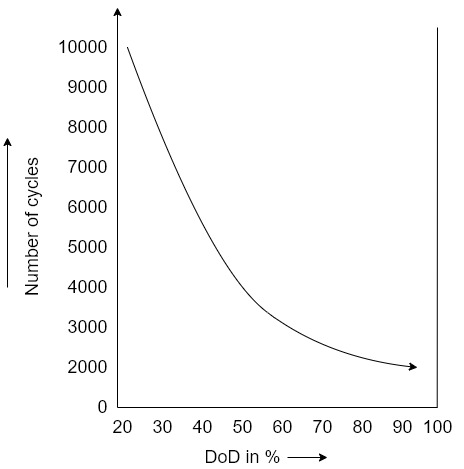
Grouping of batteries
A single battery is not sufficient to provide the necessary voltage in many cases. Thus number of batteries are connected in following manner to obtain desired voltage and result.
Series grouping



E= EMF of each batteries
r= Internal resistance of each battery
V=Total voltage =n×E volts
 =Total resistance
=Total resistance
= Total batteries
= 
In series circuit current remain same so in this method does not improve current capacity. The current capacity is same as that of each battery connected in series. But voltage can be increased by increasing number of batteries n.
Parallel grouping

V=battery voltage=E=EMF
r=internal resistance of each battery
 =Current through nth branch.
=Current through nth branch.
I=Total current

Series parallel grouping
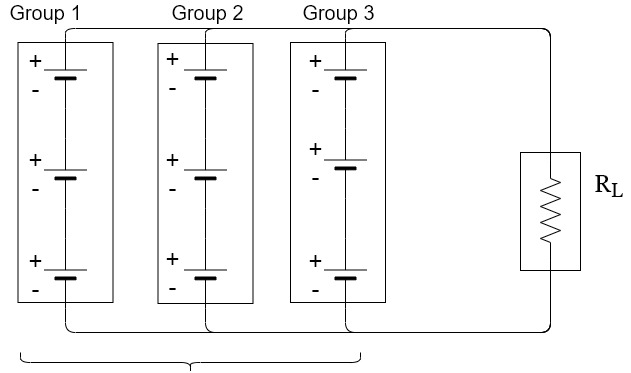
Safety precautions in battery maintenance
References: